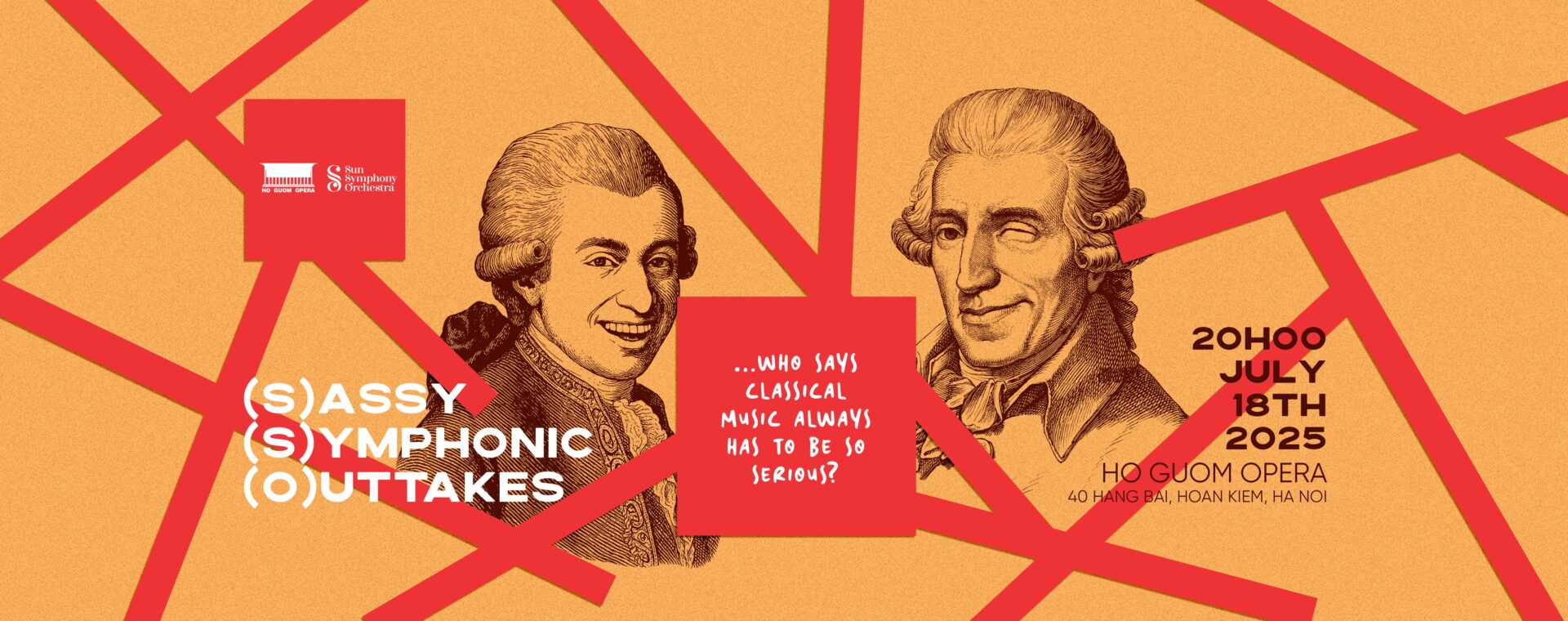Short description
Tonight’s program reminds us that the great composers weren’t always solemn geniuses perched on pedestals. They were humans—with wit, sarcasm, and a wicked sense of humor. From tooting toys to musical chaos, these works show that classical music can make us laugh out loud, even centuries later.
Mozart
A Musical Joke, K.522
Angerer
Toy Symphony
Beethoven
12 Contredanses, WoO 14
Haydn
Symphony No. 60 in C Major, Hob.I:60 “II Distratto”
Tonight’s program reminds us that the great composers weren’t always solemn geniuses perched on pedestals. They were humans—with wit, sarcasm, and a wicked sense of humor. From tooting toys to musical chaos, these works show that classical music can make us laugh out loud, even centuries later.
At the Sun Symphony Orchestra, we take our music seriously—but never ourselves. Enjoy the mischief.
Wolfgang Amadeus Mozart (1756–1791)
A Musical Joke (Ein musikalischer Spaß), K. 522 (1787)
Mozart’s Musical Joke is exactly what it sounds like: a master composer poking fun at musical incompetence. Written in 1787, this piece gleefully lampoons bad counterpoint, awkward horn playing, poor voice leading, and unconvincing cadences. Some say it’s a satire of amateur composers or village musicians; others believe Mozart was mocking certain rivals who took themselves a bit too seriously. Either way, it’s a delightful blend of genuine charm and intentional “mistakes.”
Listen for:
• Out-of-tune horn writing (you’ll hear it… it’s not your ears!)
• A hilariously off-key final cadence
• Rhythmic awkwardness and surprising silences that feel more clumsy than clever
Mozart’s genius here lies in his ability to write bad music so well that it’s brilliant. It’s the kind of sly musical humor that still works beautifully—even for a modern audience in Hanoi.
⸻
Edmund Angerer (1740–1794)
Toy Symphony (Berchtoldsgaden Music)
For years, this charming piece was attributed to Haydn or Leopold Mozart, but musicologists now believe it was penned by the Austrian Benedictine monk Edmund Angerer. The Toy Symphony is just what it sounds like: a brief three-movement work sprinkled with whistles, bird calls, rattles, drums, and toy trumpets.
Originally intended for festive court entertainment or Christmas-time performances, this piece offers a glimpse into 18th-century musical fun. The effect is cheerful, zany, and just a little chaotic—like letting a group of toddlers loose in the percussion section.
Listen for:
• Delightful musical interruptions from the “toys”
• The contrast between the “serious” string players and the silly sound effects
• How something seemingly childish is actually crafted with real compositional skill
It’s a rare treat to hear this work performed live—especially by the SSO, whose refined sound meets full-on playful abandon in this musical romp.
⸻
Ludwig van Beethoven (1770–1827)
12 Contredanses, WoO 14 (c. 1791)
Before he was the thunderous revolutionary of the Eroica and Ninth Symphony, Beethoven had rent to pay—and for that, he composed dance music. These 12 short contredanses were written for Viennese balls and aristocratic soirées, but Beethoven couldn’t help sneaking in some mischief.
Each dance lasts barely a minute, but together they paint a vivid picture of high-society fun: witty, quirky, and occasionally lopsided. There’s even a little musical Easter egg—the melody of No. 7 became the theme of the final movement of Beethoven’s Eroica Symphony years later.
Listen for:
• Surprise accents and sudden dynamic shifts
• Playful rhythmic turns that might trip up an inattentive dancer
• Beethoven’s tongue-in-cheek phrasing
The dances may be short, but they carry Beethoven’s unmistakable fingerprint: clever, bold, and never quite predictable. It’s a joy for any orchestra—and a great excuse for the SSO to show its rhythmic flair.
⸻
Joseph Haydn (1732–1809)
Symphony No. 60 in C major, Il Distratto (“The Distracted”) (1774)
If this were a sitcom, Haydn would be the king of the writers’ room. Symphony No. 60 is based on incidental music he wrote for a comic play about a hopelessly scatterbrained man—hence the subtitle Il Distratto (“The Distracted One”).
This six-movement symphony is a gleeful rollercoaster of musical jokes: sudden stops, false starts, mismatched moods, and even a moment where the violins literally retune their strings on stage—a moment of pure comedic theatre. Haydn gleefully parodies musical tropes, mocks his own themes, and leads the audience down absurd paths, only to flip everything upside down.
Listen for:
• The “tuning joke” in the Finale
• Jarring contrasts between noble pomp and total chaos
• Haydn’s uncanny timing—like a comedian who knows exactly when to pause for laughs
In a world where orchestras often play it safe, Il Distratto is a reminder that even the most sophisticated music can be hilarious. For Vietnamese audiences discovering Haydn’s wild side, this is a perfect introduction.
